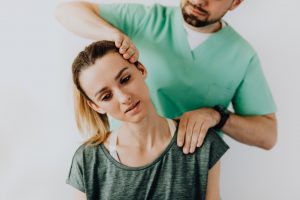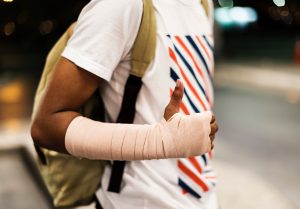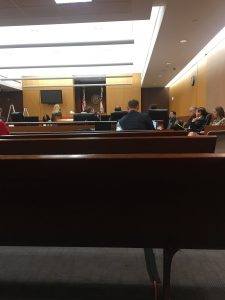
I read with interest the news today that Governor Andrew Cuomo announced the State of New York will no longer send 16 and 17 year olds to prison for criminal offenses. Instead, they will be sent to special newly created youth courts for felonies and to family court for misdemeanors. This new law is called “Raise the Age” initiative. Kudos to New York. And kudos to the other states that have raised the age for incarceration in state prisons. Since 2009, seven states have raised the age of adult proscecution to 18 and five more have tried during their 2015-16 legislative sessions. Here in Georgia, Representative Mary Margaret Oliver, Representative from the 82nd District, filed proposed legislation that would raise the age of adult criminal prosecution to 18 and enlarge the jurisdiction of Georgia Juvenile Courts to include 17 year olds. House Bill 53 was attempt by Oliver to treat juveniles under age 18 as just that…juveniles. “There are only six states that allow minors to be treated as adults for the criminal prosecution of all crimes,” said Rep. Oliver. “HB 53 is intended to bring Georgia into the mainstream so that 17-year-old minors will no longer be prosecuted as adults, but will be adjudicated in the juvenile court. Expanded juvenile court jurisdiction to include 17-years-old children is a needed reform.” If passed, HB 53 would adjust the juvenile court’s jurisdiction to include children under the age of 18. This jurisdiction includes the investigation and examination of delinquent acts committed by minors. Under current law, only children under the age of 17 are included in the jurisdiction of the juvenile court. HB 53 was read on the House Floor, but unfortunately, never received a vote. In fact, there was other legislation filed in the Georgia General Assembly that would lower the age for criminal prosecution for certain offenses rather than raise it.
Many advocate groups are joining in the fight to raise the age for criminal prosecution. For example, the Campaign for Youth Justice, based in Washington, D.C., is focused entirely on ending the practice of prosecuting, sentencing, and incarcerating youth under the age of 18 in the adult criminal justice system. Statistics show that every year in the U.S., as many as 200,000 youth are put into the adult criminal justice system, most of them for non-violent offenses. In 22 states and the District of Columbia, children as young as seven can be prosecuted as adults. Each year 95,000 youth are held in adult jails and prisons. Research shows that youth in adult jails and prisons are at a higher risk of physical, sexual, and emotional abuse than their peers in the juvenile justice system. Advances in behavioral and brain science show that adolescent brains are different from adult brains. Consequently, the judgment “exercised” by youths is different than that exercised by adults. The American Bar Association recently reported on this in its February 2017 Journal. The article interviews Dr. Judith Edersheim, co-director of the Center for Law, Brain and Behavior at the Massachusetts General Hospital. As Dr. Edersheim explains it, “there are three widely agreed-upon differences between adult brains and adolescent brains. One is that during adolescence, kids actually lose “gray matter,” the brain cells that do all of the brain’s computation. This “pruning” of gray matter is especially concentrated in the frontal lobes, which are responsible for self-control, planning, decision-making and other executive functions.At the same time, Edersheim says, teenagers get more “white matter,” the cells that pass messages between parts of the brain, which increases processing speed. Scientists think these two changes make the brain more efficient, even though it also loses some computational ability. This process of brain maturation continues after the body matures; some scientists think it ends as late as age 25. But perhaps the most conspicuous difference, Edersheim says, is that adolescent brains have more circulating dopamine—a neutrotransmitter that scientists believe governs rewards and learning—and more receptors in their brains to pick it up. Dopamine is released when a person receives many kinds of rewards, including new experiences, as well as things such as food and sex. This predisposes teenagers to seek out rewards and novelty. The thinking, Edersheim says, is that this helps push adolescents out of the nest and into the world. And what kids learn during this process, she says, helps determine what parts of the gray matter get pruned. That means a kid’s environment matters a lot, and adult prison isn’t the best environment. “If you don’t provide an adolescent with an opportunity to develop a social competency or self-esteem, if you don’t put them in contact with pro-social peers, then you’re setting trajectories which actually might persist through adulthood,” Edersheim says. “Adolescents are really these neurologic sponges for their environment.””
One of the reasons I am interested in this legislation to raise the age is because I represent the mother of a young man who was incarcerated in adult state prison here in Georgia at the age of 16. At the age of 17, he attempted to kill himself by hanging from his bedsheet. He now remains in a constant minimally conscious state in a nursing home in South Georgia due to the brain damage he suffered during the suicide attempt. He is 19 years old. I firmly believe that had he not been sent to an adult prison at age 16 he would be a healthy 19 year old now, looking forward to rehabilitation for the offense he committed. That will never happen now. 

 Atlanta Injury Lawyer Blog
Atlanta Injury Lawyer Blog






















